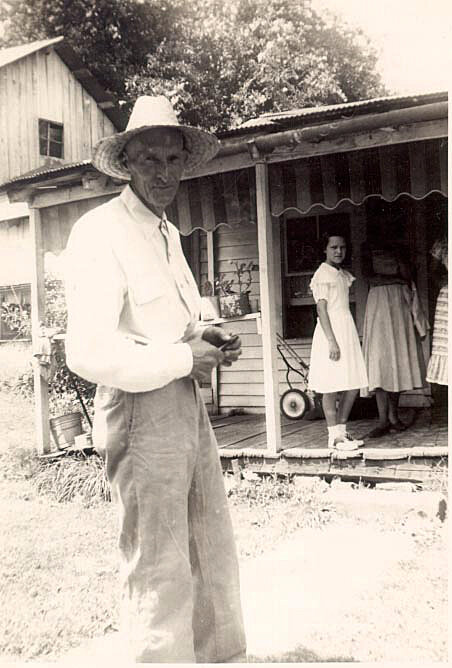One lovable lima—meet the ‘Wick’s Lima’ bean!
/Wick Smith, an avid gardener, grew his beloved lima bean as far back as the 1930s.
In 2004 Helen and H. Lee Thomas of Ravenswood, West Virginia, donated the colorful ‘Wick’s Lima’ bean to Seed Savers Exchange. The couple had grown the cherished variety (a pole lima bean) since the 1960s after receiving it from H. Lee’s grandfather, Wick Smith of Sandyville, West Virginia.
Wick Smith—an avid gardener who also taught school (in a one-room schoolhouse!) and farmed for many years—had stewarded this variety of lima since at least the 1930s. He lived to the age of 95 and maintained a large garden even after his wife passed away so that he could share the extra produce with others.
H. Lee’s parents, Orville and Jessie Thomas, were also avid gardeners and grew the lima bean in West Virginia for as long as H. Lee could remember. Upon donating the variety to Seed Savers Exchange, Helen and H. Lee shared that they grew the plants on six-foot-tall teepee-style poles, that those plants usually grew a little taller than the poles, and that the dark-green pods typically reached about two inches in length and turned tan as they matured. What other helpful tips did they offer? For fresh eating, pick the pods as soon as they feel full. If cooking, add a little butter and cover the limas with water. And while they did not recommend eating the mature dry limas—they used them only for seed—Seed Savers Exchange staff members who participated in taste tests at our Heritage Farm headquarters have given ‘Wick’s Lima’ high marks when consumed as a dry bean.
‘Wick’s Lima’ débuted in the 2013 Seed Savers Exchange Yearbook, offered by staff at Heritage Farm. In 2016 Seed Savers Exchange introduced the variety to its catalog. Its seeds range from white with purple or maroon speckles to nearly all purple.
‘Wick’s Lima’ beans range in color from white with purple or maroon speckles to nearly all purple.
How to prepare and grow ‘Wick’s Lima’ bean
This pole bean climbs vigorously and grows slightly curved pods. Fresh shelling limas are sweet, while dry lima beans taste nutty. This versatile variety works for fresh eating and making a variety of dishes; it can also be canned and frozen. A 2010 Smithsonian article suggests using limas to make succotash, hummus with herbs, and soup while noting they worked well when roasted or added to bacon and eggs.
Lima beans thrive in hot temperatures and full sun. Direct sow seeds outdoors in well-fertilized soil after danger of frost has passed and soil and air temperatures have warmed. Space seeds 2 inches apart and plant them about 1 inch deep in rows spaced 36 inches to 48 inches apart . As plants grow, they may need support of a trellis to keep the vines off the ground. Sow a section or row every two or three weeks to yield a continuous crop.
Stay tuned for more blog posts offering some of the best heirloom seed stories we know!















